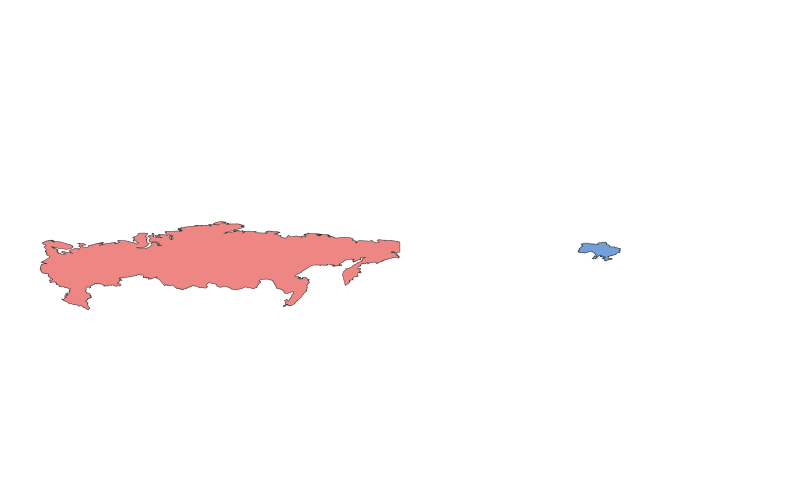Russia vs. Ukraine: A Geographical Comparison

Geographical Comparison Table
| Category | Russia | Ukraine |
|---|---|---|
| Location | Northern Eurasia, spanning Europe and Asia | Eastern Europe, bordered by Russia to the east |
| Size | ~17.1 million km² (largest country) | ~603,500 km² (second-largest in Europe) |
| Climate | Arctic, subarctic, temperate, and continental | Temperate continental, Mediterranean (southern coast) |
| Natural Resources | Oil, gas, coal, timber, minerals | Fertile soil (Chernozem), coal, iron ore, natural gas |
| Urban Development | Moscow, St. Petersburg as major hubs | Kyiv, Kharkiv, Odesa as key cities |
| Transportation | Extensive rail network, Trans-Siberian Railway | Dense rail and road networks, major ports on Black Sea |
Description of Russia and Ukraine
Russia
Russia, the largest country in the world, spans two continents (Europe and Asia) and encompasses diverse landscapes, from tundra to forests and steppes. Its vast size grants it abundant natural resources, making it a global leader in oil and gas production. Historically, Russia emerged as a major power under the Tsardom and later the Soviet Union. Culturally, it boasts a rich heritage in literature, music, and art, with figures like Tolstoy and Tchaikovsky. Economically, it relies heavily on energy exports, though it faces challenges due to sanctions and geopolitical tensions.
Ukraine
Ukraine, often called the "breadbasket of Europe," is renowned for its fertile soil, particularly the Chernozem region, which supports extensive agriculture. It has a strategic location along the Black Sea, with ports like Odesa playing a key role in trade. Historically, Ukraine has been a crossroads of Eastern European cultures, influenced by Slavic, Byzantine, and later Soviet rule. Culturally, it is known for its Cossack traditions, vibrant folk art, and contributions to literature (e.g., Taras Shevchenko). Economically, Ukraine has faced challenges due to political instability and conflict, but it remains a significant producer of grain and steel.
Both countries share deep historical ties but have diverged significantly in recent decades, particularly after Ukraine's independence in 1991 and the 2014 annexation of Crimea by Russia.